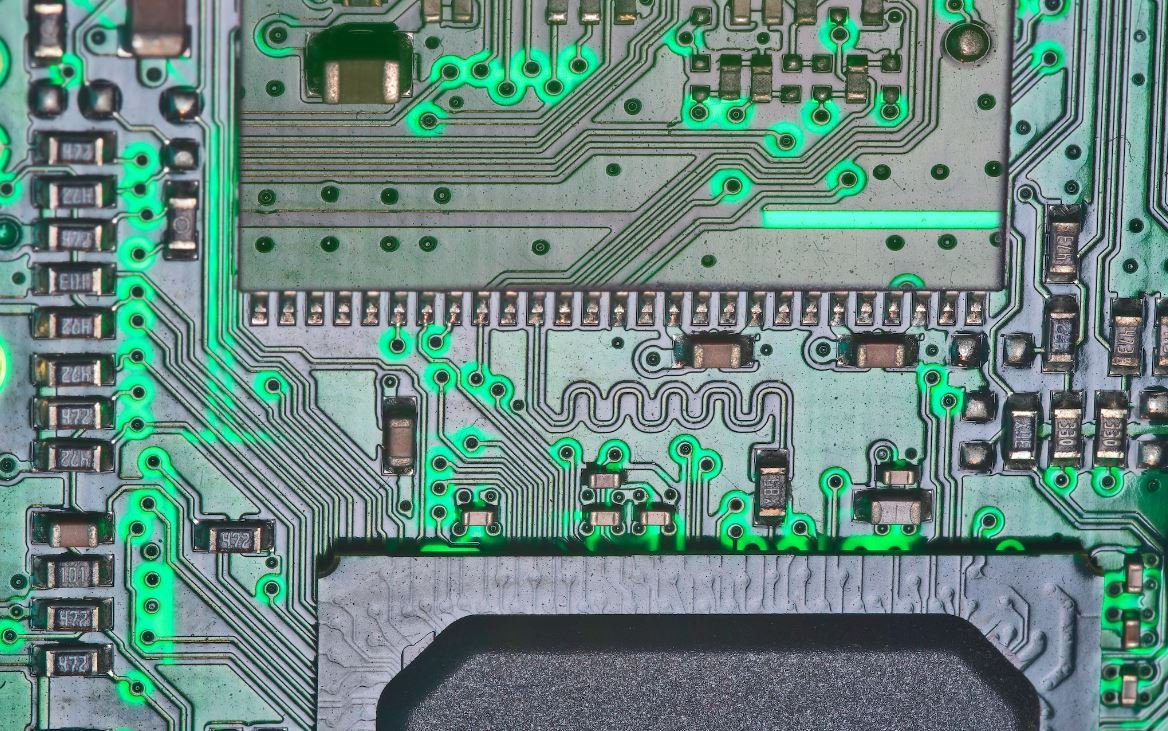Application vs Service
In the world of technology, we often come across the terms “application” and “service”. While they might seem similar, they have distinct differences in terms of functionality and purpose. Understanding these differences is crucial for making informed decisions about software development and deployment strategies.
Key Takeaways:
- An application is a self-contained program that runs on a device and provides specific functionalities.
- A service is a program that runs on a server and offers functionality to clients over a network.
- Applications are typically designed for end-users, while services focus on providing functionalities for other software systems.
- An application can be used offline, while a service requires an internet connection to function.
- Applications are generally more resource-intensive, while services are designed for efficiency and scalability.
Applications
An **application** is a software program designed to perform specific tasks or provide specific functionalities for end-users. It is typically installed and run on a user’s device, such as a desktop computer, smartphone, or tablet. Applications are standalone programs that can operate offline, although some may require an internet connection for certain features. For example, a word processing application allows users to create and edit documents, while a photo editing application enables users to manipulate images and add effects.
An interesting fact is that **mobile applications** have become increasingly popular, with billions of them available for download from app stores. These apps cater to various needs, such as games, social networking, productivity, and more.
Services
A **service**, on the other hand, is a program that runs on a server and offers functionality to clients over a network. Services are designed to provide specific services to other software systems or applications. They focus on scalability, efficiency, and interoperability. Services often follow specific industry standards and use protocols like HTTP, XML, and JSON for communication. For example, a weather service provides real-time weather information to various applications and websites, allowing them to retrieve and display weather data to their users. Services are typically used in the context of service-oriented architectures (SOA) and web services.
Did you know that **cloud computing** heavily relies on services? Cloud platforms offer a variety of services, such as storage, databases, computation, and networking, which can be accessed by users on-demand over the internet.
Comparison
| Applications | Services | |
|---|---|---|
| Functionality | Provides specific functionalities to end-users. | Offers services to other software systems. |
| Deployment | Installed and run on user devices. | Runs on servers and accessed over a network. |
| Offline Availability | Can be used offline. | Requires an internet connection. |
| Resource Usage | Typically more resource-intensive. | Designed for efficiency and scalability. |
| Focus | End-user functionalities. | Catering to other software systems. |
Conclusion
In summary, applications and services have notable differences in terms of functionality, deployment, availability, resource usage, and focus. Applications are standalone programs installed on user devices, catering to end-user functionalities and being usable offline, while services run on servers, are accessed over a network, and focus on providing services to other software systems. Understanding these distinctions is essential for making informed decisions relating to software development and deployment.

Common Misconceptions
1. Applications and Services are the Same Thing
One common misconception is that applications and services are interchangeable terms, but they actually refer to different things.
- Applications are standalone software programs that run on devices, such as smartphones or computers.
- Services, on the other hand, refer to software components that provide specific functions over a network and are accessed remotely.
- Applications can utilize services in order to provide additional functionality or access external resources.
2. Applications Cannot Exist Without Services
Another misconception is that applications cannot exist without services, but this is not true in all cases.
- In some cases, applications can function without relying on any external services or resources.
- However, certain applications heavily rely on services to provide additional features or access external data and functionalities.
- Services can enhance the functionality and usability of applications, but they are not always a requirement for an application to operate.
3. Services are Only Accessed through Applications
Some people believe that services can only be accessed through applications, but this is a common misconception.
- Services can be accessed through various means, not just applications. They can be accessed through web browsers, other services, or even directly through APIs (Application Programming Interfaces).
- Applications are just one way to interact with services, but they are not the only way.
- Services can be utilized by other services to perform specific tasks and exchange data.
4. Applications and Services Are Always Developed Separately
Many people believe that applications and services are always developed separately, but this is not necessarily the case.
- While it is true that applications and services can be developed independently, they can also be developed together as part of a unified system.
- Developers may choose to build a service specifically for their application, which can make the integration and functionality more cohesive.
- Alternatively, existing services can be integrated into an application to enhance its functionality.
5. Applications and Services are Only Relevant in the Technology Industry
One common misconception is that applications and services are only relevant in the technology industry, but this is not true.
- Applications can be found in various industries, such as healthcare, finance, logistics, and entertainment, among others.
- Services are also present in various sectors and are used to provide specific functions or access to resources.
- Even if you don’t work in the technology field, you might come across applications and services in your everyday life without realizing it.

Comparison of Popular Mobile Application Categories
In today’s digital age, mobile applications have become an integral part of our daily lives. This table showcases the top five categories of mobile applications in terms of user popularity and market demand.
Comparison of Leading Social Media Platforms
Social media platforms have revolutionized communication and connectivity. This table presents a comparison of the top social media platforms based on active user counts, engagement metrics, and key features.
Comparison of Cloud Storage Services
Cloud storage services have simplified the way we store and access our digital files. This table provides an overview of leading cloud storage services, comparing their storage capacities, pricing plans, and additional features.
Comparison of Leading Video Streaming Platforms
With the growing demand for online entertainment, video streaming platforms have become essential for accessing movies, TV shows, and online content. Explore this table that compares popular video streaming platforms based on subscription fees, content libraries, and exclusive features.
Comparison of Email Service Providers
Email communication remains a vital part of our personal and professional lives. This table presents a comparison of popular email service providers, highlighting their storage limits, spam filtering capabilities, and collaboration tools.
Comparison of Music Streaming Platforms
Music streaming platforms have transformed the way we listen to music. This table compares different platforms based on their music libraries, audio quality, and personalized recommendations to help you choose your ideal music streaming service.
Comparison of Ride-Hailing Services
Ride-hailing services have changed the way we commute and travel. This table compares the most popular ride-hailing services by factors such as pricing structures, availability in different cities, and additional features.
Comparison of Online Payment Systems
In the digital era, online payment systems have revolutionized the way we make transactions. This table compares popular online payment systems based on their security features, transaction fees, and ease of use.
Comparison of Mobile Phone Manufacturers
Mobile phones have become an extension of our identity. This table compares leading mobile phone manufacturers by brand value, customer satisfaction, and technological innovations.
Comparison of Web Hosting Providers
Web hosting providers play a crucial role in ensuring optimal website performance. Explore this table comparing different web hosting providers based on their uptime, customer support, pricing, and additional features.
In today’s rapidly evolving digital landscape, choosing the right application or service can significantly impact our productivity, entertainment experience, and overall satisfaction. Through these diverse tables, we have explored various categories and compared the leading options within each. From social media and cloud storage to ride-hailing services and email providers, extensive research and data analysis help us make informed decisions in selecting the best available options.
FAQ – Application vs Service
Frequently Asked Questions
What is an application?
An application, also known as software application or app, is a computer program designed to perform specific tasks or functions for the user. It can be a desktop application, mobile app, web app, or any other software that runs on various devices.
What is a service?
A service is a type of software that provides specific functionality to users or other applications over a network. It typically runs continuously in the background, waiting for client requests and performing tasks upon request.
What are the differences between an application and a service?
The main difference between an application and a service lies in their purpose and behavior. An application is a standalone program that is initiated by the user to perform specific tasks, while a service is a program that runs continuously in the background, providing functionality to other applications or users upon request.
Can an application also be a service?
Yes, an application can also be designed to function as a service. In such cases, the application can be started as a regular program by a user but can also run continuously in the background and provide specific functionality to other applications or users upon request.
Do all services require an application to access them?
No, not all services require a specific application to access them. Some services can be accessed through web browsers directly, while others might have dedicated applications or APIs that allow interaction with the service’s functionality.
Which is more suitable for a specific task, an application or a service?
The suitability of using an application or a service depends on the specific task at hand. Generally, if the task requires continuous functionality or running in the background, a service might be more suitable. On the other hand, if the task is user-initiated and requires a specific interface or user interaction, an application might be the better choice.
Can an application and service work together?
Yes, an application and a service can work together to provide a more comprehensive solution. The application can utilize the service’s functionality to enhance its capabilities or provide additional features, while the service can rely on the application to interact with users and handle user-driven tasks.
Are there any security concerns related to applications and services?
Both applications and services can have security vulnerabilities, and it’s crucial to address them to ensure data and system integrity. Applications might be prone to vulnerabilities like input validation issues, while services might face security challenges like unauthorized access or network-based attacks. Thorough security practices should be followed when developing and using both applications and services.
Can an application become a service over time?
Yes, an application can evolve into a service over time. Initially, an application might provide functionality only through a user interface, but as its usage increases and demand for automated or continuous functionality arises, it can be enhanced to run as a service, providing its capabilities to other applications or users upon request.
What factors should be considered when deciding between an application and service?
Several factors should be considered, including the nature of the task, required functionality, scalability, user interaction, resource utilization, and security. Understanding the specific requirements and constraints can help in determining whether an application or a service is more suitable for the given context.





